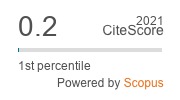Integrating AI, Machine Learning, and Cloud Computing to Drive Innovation in Renewable Energy Systems and Education Technology Solutions
Abstract
This document contains a summary of all the problems that have arisen, from the design and selection of equipment, to its installation and configuration. The selection of physical systems has been performed such that they allow inexpensive energy generation models. Two physical systems have been considered in fixed installations in the range of 5–10 kW and in mobile installations with a capacity of 1500–1600 W. All wind turbines include an aerodynamically designed horizontal axis with two blades. The selected generation systems have been designed to allow future portability. The selection of the final site of the installation has been a difficult task due to the local orographic variables (terrain, obstacles, etc.) as well as the mechanical protection of the systems against high winds. Regarding the grid connection of the model, there are still many aspects to investigate. The hardware chosen allows connection with any devices that send data over OPC. Communication through REST or MQTT protocols, as well as OPC UA connections can be completed. The installation of physical systems in off-grid sites poses additional problems for their operation. The constant monitoring of such physical systems is achieved with specific knowledge of programming languages.
In renewable energy systems that use intermittent energy sources, it is essential to have autonomous systems capable of adequately governing this energy management without the intervention of specialists. A method for incorporating leakage power consumption in smart systems operating in a hybrid environment is presented. The Hybrid Petri Net has been presented as a formal modeling tool. An algorithm for automatic hybrid synthesis was proposed. Analyses were conducted on case studies of smart environments, including home, smart grid, urban, and renewable environments. The hybrid model of the smart city was composed of more than 1000 places and transitions. The prospects for further research include the significant complication of the structure of hybrid systems. Developers will need to consider new properties of hybrid systems. The addition of stochastic processes will require time notation and will complicate the analyzers and simulators. Additionally, a system-inspired approach to easily understandable models will be developed, adding more processes that can work regardless of each other.




